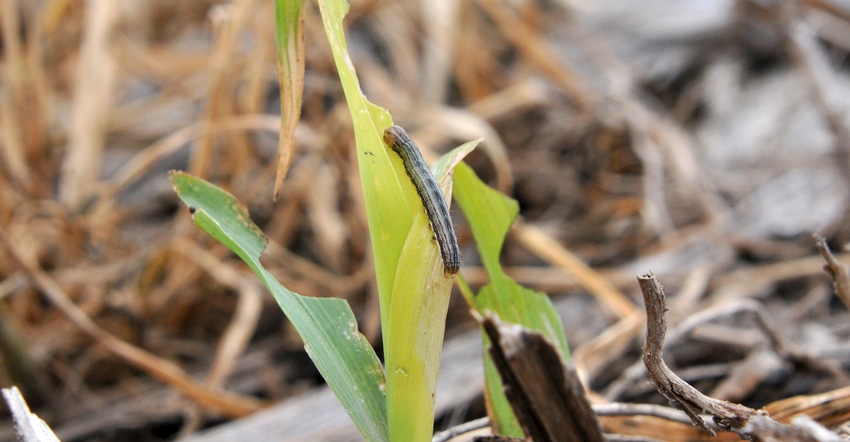
When Bob Nielsen walks into a cornfield for the first time, he’s looking for two primary factors. “Is the stand adequate and uniform, and was emergence uniform?” says Nielsen, Purdue University Extension corn specialist. “Those are the two big things I want to assess first and foremost.”
First, did the planter drop seed uniformly, and is the stand that emerged adequate? “If it’s not an adequate stand, ask why and do some investigating,” Nielsen says. And do it row-by-row. There could be difference in total stand count and/or spacing between rows.
An inadequate stand may be linked to planter issues, but it could stem from weather and soil conditions, or early season disease or insect problems. The time to figure it out is while the evidence is fresh, he says.
“Then assess uniformity,” he continues. “Did plants come up within an acceptable amount of time? Are they about the same size? If not, determine why some plants emerged later than others. It can help correct planter issues before next season.”
Jeff Lakin, technical agronomist for Channel Seeds, Rensselaer, typically walks many corn fields in northern Indiana early in the season. Like Nielsen, he agrees it’s important to assess stand and uniformity of stand, both for plant spacing and plant size.
More scouting advice
Here are other factors to watch for during the first half of the season:
Seedling diseases. If there are plants missing, it may be due to seedling diseases, including seedling blights, Lakin says. You likely won’t know why plants are missing later unless you find evidence of disease or insects on an early season scouting trip.
Early weeds. Monitor the size of weeds early in the season, Lakin advises. Don’t let weeds get too large before spraying. The atrazine label, for example, recommends spraying weeds at a maximum height of 12 inches. Some labels also specify the latest corn growth stage for applying herbicide.
Insect pests. Be aware of the potential for true armyworm and/or black cutworm feeding, Lakin says. For both these pests, moths fly up from the south. They’re attracted to green vegetation to lay eggs, making weedy fields before planting or fields with cover crops more likely targets. They won’t show up in every field, but be aware of the potential and have a plan if these insects reach the economic treatment threshold, he advises.
Corn rootworm potential. Corn rootworms haven’t posed the threat in northern Indiana they did several years ago, but there was an uptick in activity in 2020. You may want to dig plants and examine roots for larvae in June and early July, he says.
Nutrient deficiencies. Keep your eyes peeled for evidence of nutrient deficiencies while walking cornfields, Lakin says. Nitrogen deficiency may show up as pale, stunted plants. In severe cases, yellowing and browning starts at leaf tips and works down the midrib. Phosphorus deficiency causes purpling of plants. Other conditions can cause purpling, too, including cold, wet soils. In those cases, it may be temporary. Potash deficiency usually begins as browning around leaf margins.
Root structure. It’s worth digging a few plants to assess root development, Lakin says. Are roots developing normally, or are they limited by soil compaction?
Tissue samples. If you’re after high yields, you may want to pull tissue samples throughout the growing season. If nutrients are limiting, foliar applications might be an option, Lakin says.
About the Author(s)
You May Also Like




